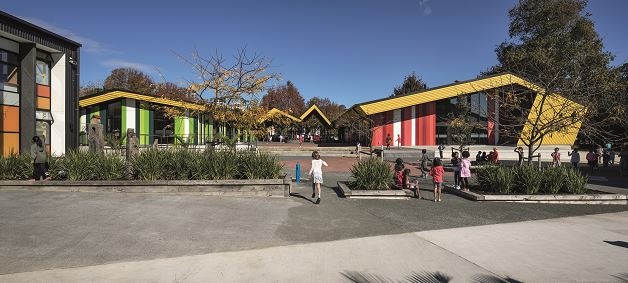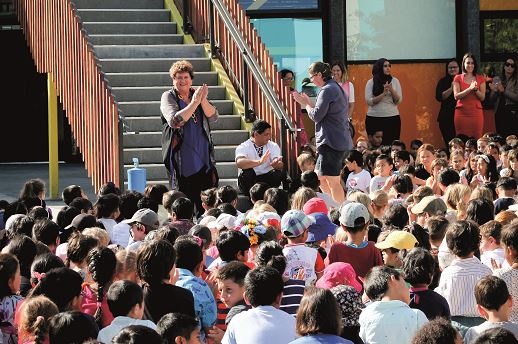
Freemans Bay School is situated in the heart of Auckland, New Zealand. With a transient, multi-cultural population of 400-500 students aged between 5 years and 11 years, the school has successfully worked to overcome some major challenges relating to managing the most diverse range of cultures and socio-economic groups in the city.
The head teacher, Sandra Jenkins, has been instrumental in transforming the school into a leading institution that has been recognised for its development of innovative learning environments that support and enrich the lives of all the students in the school and that connect with the community as a whole.
The vision of Freemans Bay School of ‘Engage, Enrich, Empower’ has been the design driver that has helped to align school design and collaborative ways of teaching and learning. The school wants students to experience learning spaces like the modern, activity-based designed office spaces that many parents experience in their work spaces today, rather than the factory style or hierarchical and silo offices of the past.

At Freemans Bay School, the staff and leaders have taken a literal, physical approach to the belief that learning spaces need to be conducive to the actual needs of the students. The ideology that places the needs of the learner at the heart of the process of education is evidenced in the day-to-day learning experiences and relationships between all members of the learning community.
Learner-Centred Thinking
Before the school was redesigned, it already had a strong, learner-centred approach to teaching that made learning personal. Students were enabled to pursue their interests and strengths through a curriculum experience that was inquiry-based and focused on the development of skills and competencies for life, as a means of experiencing relevant and rigorous, academic programmes.